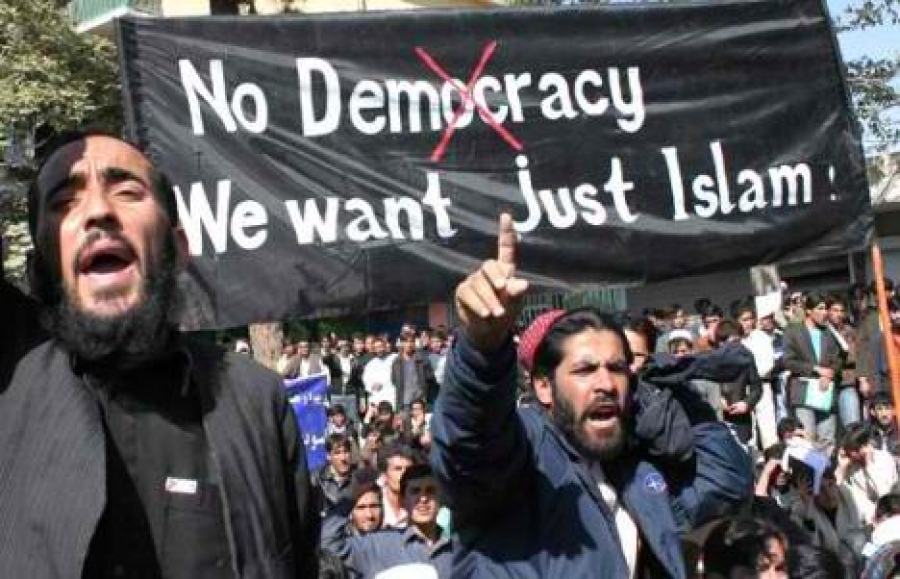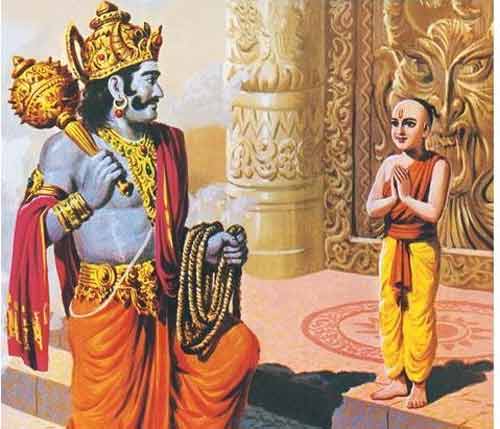- Visitor:26
- Published on: 2024-09-02
Islam and Democracy: Look Back in Arab Spring

Living in an era of democracy, many are advocating the doctrine today. However, it has remained thorough, even with the leftist intellectuals, that the Islamic countries are lacking in democracy, and, we all may agree upon the fact that the lack of democracy leads to dissatisfaction among the people, eventually culminating to anger and insurgency among its people. So, democracy is the only solution to the problems caused by the Islamic countries and its Muslim population. This article examines the track record of democracy in Islamic countries.
The Arab Spring
Usually, in the Islamic countries, there are no democracies and whatever exists in the name of democracy qualifies to be labelled as sham democracies. For instance, when Arab Spring, the series of rebellions against the incumbent government in 2010s, started in Tunisia and President Zine El Abidine Ben Ali left the country, the fire also caught Egypt in its grip as the then-President, Hosni Mubarak, resigned the post. Later, the Arab Spring went too far by ousting the dictator, Gaddafi, in the civil wars started from 2011. In Yemen, after the removal of Ali Abdullah Saleh, a civil war had started as well The atmosphere of the Arab Spring and doomsday of democracy began when Saddam Hussein was overthrown by the USA’s invasion of Iraq in 2003. The liberals in the US believed that Islamic countries were being ruled by dictators. Hence, they were trying to impose democracy on Iraq but they failed miserably. Via the Arab Spring, the liberals from the Western hemisphere mechanized to impose democracy in the Middle East. But, unfortunately, the pragmatic structure of Islam is not compatible with democratic values.
The Impact of the Arab Spring
In Iraq it has 60% Shia population and 17% Kurd population. But, Saddam was ethnically Arab and Sunni, being a person from the minority groups of Islam in the land, comprising of barely 20% of the entire Iraqi population. In 1991, the Shias and the Kurds waged a rebellion against the Sunni-leader Saddam but he successfully crushed all the revolts. But, the US, in the wake of democracy, invaded Iraq in 2003. He was overthrown in 2004 immediately after a series of riots and violence erupted between Shias, Sunnis and Kurds which caused tens of thousands of deaths. From 2006, the Iraqi Civil War was fought between Shias, Sunnis and Kurd extremists. Then, from 2008 to 2011, again there were series of riots in Iraq. During the power vacuum, the Sunni Islamic radical Abu-Bakr Al Baghdadi rose to prominence. He created a new group called ISIS (Islamic State of Iraqi and Syria) usually known as Daesh. Baghdadi’s plan to wipe out Shias and Kurds in Iraq leads to, finally, from Iraqi Civil War II (2013-2017). Due to the violence in Iraq, it is believed that 1.1 million people were killed.
In Syria, Basher Al Assad (an Alawaite Shia) had been ruling in Syria. He succeeded his father, Hafiz, in 2000. In Syria, 74% of the population comprises of Sunni sect and barely 13% of the population are the Shias. But, in 1970, Hafez al Bashar, father of the present Syrian dictator Bashar, overtook. In 1976, a Sunni insurgent group named ‘Muslim Brotherhood’ rebelled against the Hafiz regime. Hafiz successfully put down the revolt in 1982. But, in 2011, during the Arab Spring protests which broke out in Syria, the ‘Free Syrian Army’, a Sunni revolutionary group, rebelled against the existing dictator Basher Al Assad in order to overthrow him. Then Sunni radical Daesh (or, the ISIS) intervened in the Syrian civil war to fully help Sunnis in Shia. A full-fledged war began in Syria in 2018. After the extensive military efforts made by the Shias and the Kurds (in northern Syria), the Syrian insurgency was finally put to rest. But, the Syrian insurgency costed more than 650,000 lives while 6 million refugees were left to suffer.
In Libya, the Arab Spring protests broke out in 2011, leading to a rebellion against Muammar Al-Gaddafi. In October, 2011, he was brutally assassinated by the rebels. Now, Libya turned into an Arab-dominated country where the Berbers, Turks, Blacks, Toubou, Tuareg tribes had been residing. Gaddafi was an Arab-ethnic leader. In Libya, conflicts between various ethnic groups are of centuries old. Secondly, Gaddafi’s role in sub-Saharan Africa was always conflicting. In July, 1977, he invaded the border areas of Egypt but was defeated. From 1978 to 1987, he launched a series of military campaigns in Chad and played a crucial role in Chad’s internal political matters. Finally, with the help of France, the Libyan army was defeated. In 1981, Gaddafi was supporting Palestinian Liberation Organization against Israel. In 1986, the United States Air Force carried out airstrikes in Libya, known as ‘Operation El Dorado Canyon’, to avenge the ‘West Berlin Discotheque bombing’ in Discotheque La Belle in 1986. Here, Libya was providing help to the insurgents who used plastic explosives and this all caused casualties. So, the US, in revenge, bombed two Libyan metropolises, Tripoli and Benghazi.
After Gaddafi’s assassination with the hands of Libyan insurgents, Libya, the then richest country of African continent, fell into a never-ending civil war. After 2014, the Islamic elements joined this civil war under ISIS, causing destruction. Thousands were killed and lakhs were displaced. Till now, there is no stable government in Libya.
In 2011, the Arab Spring broke out against Yemen's President and military dictator, Ali Abdullah Saleh. Finally, in 2012 Abdullah Saleh had to resign. Yemen is a country situated in the Arabian Peninsula, with a population of 34 million. The population is bifurcated into 34.5% of Shias and 65% of Sunnis. Northern mountainous regions are dominated by the Houthis-practicing Zaidi sect of Shias. In 1918, north Yemen became independent and southern Yemen became the British Protectorate till 1967. In 1969, the Communists overtook South Yemen but, in 1990, Yemen became a united country under the leadership of Ali Abdullah Saleh. Now, President Saleh was a Zaidi Shia. So, in 1994, the Southern Sunni leaders rebelled against him, declaring the Democratic Republic of Yemen (DRY) on 21st May, 1994. President Saleh used force against the Southern Sunnis and crashed the revolt. But, after the resignation of Saleh in 2012, Iran created the Houthis Shia militia in Yemen against the Sunnis of the South and the Wahhabi Sunnis of the Saudi Arabia. In 2014, Houthis-Shia, with the help and aid from Iran, invaded South-Western Saudi Arabia and Southern part of Yemen. From the inception of this invasion, the Saudi Arabia had carried out airstrikes on Northern Yemen and destroyed Houthi rebel bases. In this civil war, ISIS and other Sunni groups were fighting against the Shias. It is believed that over 3.7 lakh people were killed (1.5 lakh from violence and rest from famine and cholera). Now, there are 5 million internally displaced people in Yemen. In 2022, ceasefire was imposed but still skirmishes are ongoing.
Opinion on the Arab Spring
Now, the Arab Spring is the best example of the failure of democracies in Islamic world. But, these are not the only cases. In Pakistan, democracy has failed. The army overtook Pakistan’s control repeatedly in the past. In Bangladesh, before 1990 it was also ruled by the army. Thus, failing democracies are almost symbolical to Islamic countries!
- 13 min read
- 1
- 0










